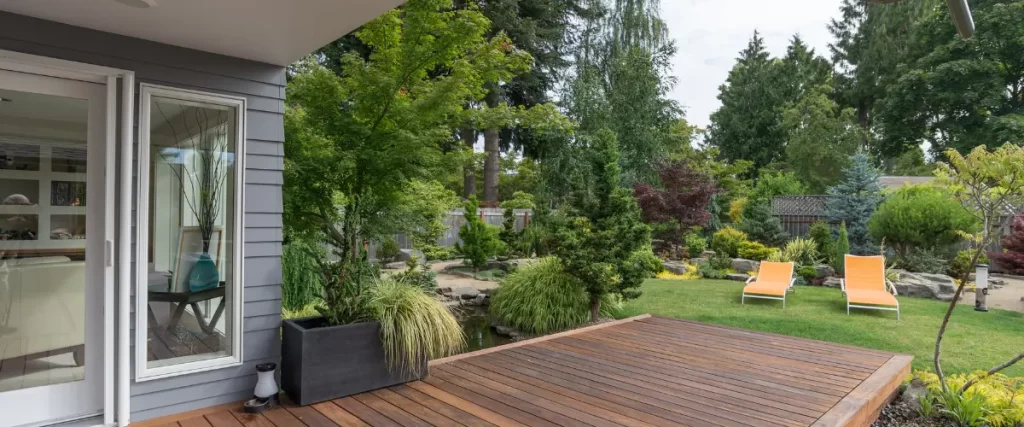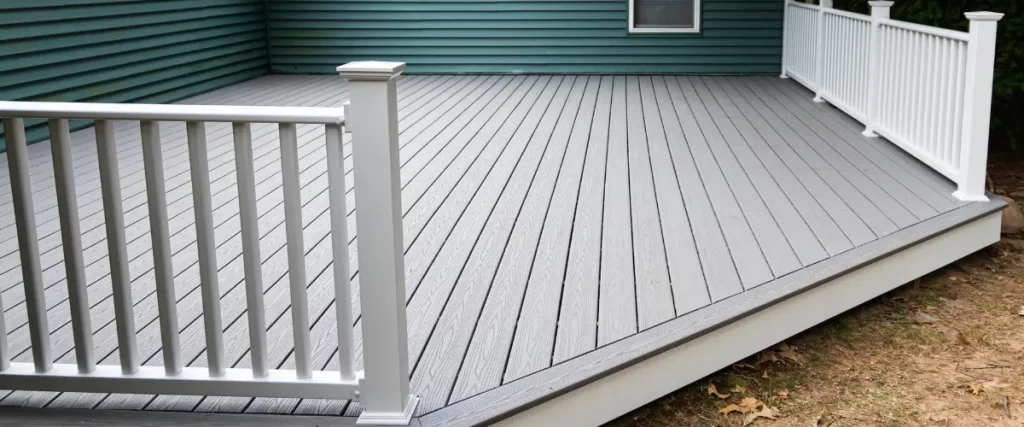Nebraska’s Expanding Clay Soils & Your Deck: How to Prevent Foundation Shifting
If you’ve ever looked at your deck and thought, “Was that post always tilted like that?” — you’re not alone. Homeowners all across Nebraska face this exact issue, and it’s not just bad luck or poor construction.
It’s the ground beneath your feet. Literally. Nebraska’s expanding clay soils are a silent force that can wreak havoc on your deck’s foundation — and if you’re not careful, your investment could start shifting, sinking, or even cracking apart.
Let’s break this down together. Whether you’re in Omaha, Lincoln, or anywhere in between, understanding how our unique soils affect your outdoor structures could save you thousands in repairs — and help you build smarter from the ground up.

What Are Expansive Clay Soils, and Why Does Nebraska Have So Much of Them?
Expansive clay soil — also called shrink-swell soil — is exactly what it sounds like. It expands when it absorbs moisture and shrinks when it dries out. In Nebraska, thanks to our climate (hello humid summers and dry winters), this expansion and contraction happens a lot. Our state’s soil composition contains a high amount of montmorillonite clay, which is especially reactive to moisture changes.
The result? A never-ending cycle of swelling and shrinking right underneath your deck footings. Over time, that movement puts pressure on your deck’s foundation, pushing and pulling it in all directions.
How Expansive Soils Affect Deck Foundations in Nebraska
If you’re noticing uneven surfaces, wobbly railings, or gaps between your deck and home, you might be seeing the effects of soil movement. Here’s how it happens:
Seasonal changes cause soil movement. In spring and summer, rain and humidity make clay absorb water and expand. In fall and winter, drier air and freezing temperatures cause it to shrink and harden. This constant back-and-forth shifts the soil beneath your deck.
2. Poor Drainage Makes Things Worse
Without proper grading and drainage, water can pool around your footings, supercharging that expansion process.
3. Unsupported Footings Start to Sink or Tilt
Traditional shallow deck footings can’t handle Nebraska’s shifting ground. Eventually, they move — and so does your deck.
Why This Matters for Nebraska Homeowners
Your deck is more than just a place for grilling steaks or hosting birthday parties. It’s part of your home’s value. Foundation shifting doesn’t just mess with the look and safety of your deck — it can pull on the side of your house if it’s attached. That can cause:
Cracks in your siding or foundation, water seepage, and structural damage to your home.
Sound expensive? It is. But the good news is, you can absolutely prevent this.
How to Prevent Foundation Shifting in Expanding Clay Soils
Let’s get into the good stuff — how you can protect your deck (and your wallet) from Nebraska’s volatile soil.
1. Choose the Right Footing System
The standard concrete pier isn’t enough for our soil. Here’s what works better:
Helical piers are screw-like steel piers that extend deep below the active clay layer, reaching stable soil that remains unaffected year-round. Sonotube footings with a gravel base are another option; if you’re using poured concrete footings, ensure they are set deep below the frost line and surrounded by gravel to improve drainage.
Floating deck footings, which should be used with caution, are suitable only for small decks and patios. While they can move slightly with the soil without causing damage, they pose a higher risk in clay.
2. Go Deep — Really Deep
In Nebraska, you’ll want your footings to go at least 42 inches deep (below the frost line). Some experts recommend going even deeper in areas with especially active clay.
Check your local building codes — Lincoln and Omaha both require footing depths that take soil types into account. Here’s a resource from Nebraska’s Department of Environment and Energy that can help.
3. Improve Site Drainage
Water management is huge when it comes to clay soil. Make sure to:
Slope the soil away from your deck with at least a 5% grade. If necessary, install French drains or drainage tiles. Make sure gutters and downspouts are clear and direct water away from the footings.
4. Use Proper Materials for Deck Construction
When the foundation moves, the rest of your deck needs to be able to flex a bit without cracking or splitting.
Use pressure-treated lumber or composite decking that can handle minor shifts. Ensure that your joist hangers, brackets, and fasteners are corrosion-resistant, as this will make them last longer and remain secure.

Signs Your Deck May Already Be Affected
If you’re wondering whether your deck has already fallen victim to Nebraska’s shifting soils, here’s what to look for:
Posts or piers that are visibly tilting, gaps between the deck and house wall, uneven stairs or railings, cracks in footings or concrete pads, and sinking or “bouncy” sections of the deck surface.
If you see any of these signs, don’t panic — but don’t wait. Catching the issue early could prevent major repairs down the road.
Best Deck Footing Manufacturers for Clay Soils
High-quality deck footing products built for expansive soils. Choose durable options engineered for movement resistance.
Here are the top manufacturers you should know:
Techno Metal Post – Known for their strong, deep-helical pier systems designed for all soil types, including expansive clay.
Diamond Pier – Concrete-free footing systems that use pin piles to resist uplift and shifting.
Bigfoot Systems – Reusable footing forms that help create stable, frost-protected footings in challenging soil.
Simpson Strong-Tie – While best known for fasteners, their pier systems offer durability and engineering support.
Postech Screw Piles – Specialize in thermal-protected steel piles that are great for clay-heavy regions like Nebraska.
Frequently Asked Questions (FAQs)
Q: Can I build a floating deck in Nebraska’s clay soil?
A: You can, but it’s risky. Floating decks are more prone to shifting and may require frequent leveling in clay-heavy areas.
Q: How deep should I dig deck footings in Nebraska?
A: At least 42 inches — that’s below the frost line and helps avoid shallow soil movement.
Q: What if I already have a deck that’s shifting?
A: You may need to retrofit it with deeper footings or helical piers. Get an inspection to assess the damage.
Q: Do I need a permit for deck footings?
A: Yes. Cities like Omaha and Lincoln require permits for most decks, and they’ll review your footing plans carefully.
Q: How can I check what kind of soil I have?
A: Contact your local extension office or hire a geotechnical engineer. You can also review USDA soil maps for your area.

Final Thoughts: Nebraska Soil Isn’t Going to Change — But You Can Plan for It
Look, you can’t stop the ground from moving — that’s just life in Nebraska. But you can outsmart it. With the right footing system, proper drainage, and smart design, your deck can stand strong no matter how wild the weather gets.
And hey, if you’ve got questions about your specific situation or just want to make sure you’re doing things the right way, we’re here to help.
Contact us at (402) 369-5724 to talk about how to make your deck foundation last — no shifting, no cracking, just a rock-solid setup you can count on.
